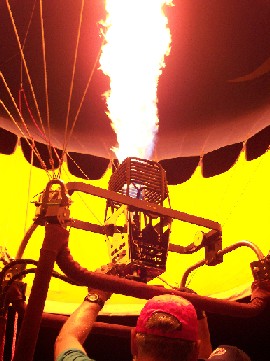How do gas laws affect hot air balloons?
1 Answer
The operation of a hot air balloon depends on Charles' Law, the Ideal Gas Law, and Archimedes' Principle.
The operator first ignites a propane burner to fill the balloon with air.

As the air continues to heat up, it expands, according to Charles' Law:
The balloon has a fixed volume, so the extra volume flows out of the hole in the bottom of the balloon.
We can rearrange the Ideal Gas Law,
This says that the density of the air decreases as itse temperature increases. Thus, the heated air inside the balloon is less dense than the cool air outside of the balloon.
Now, Archimedes' principle states that when you suspend an object in a fluid, the buoyant force is equal to the weight of the fluid displaced. As a result, an object will float in a fluid if it is less dense than the fluid.
For the balloon to rise and lift the basket and passengers off the ground, the hot air in the balloon must have a low density. The total weight of balloon, basket, passengers, and heated air must be less than the total amount of air displaced by the balloon.
Then the upward buoyant force will exceed the downward weight (gravitational force). The balloon will fly.


